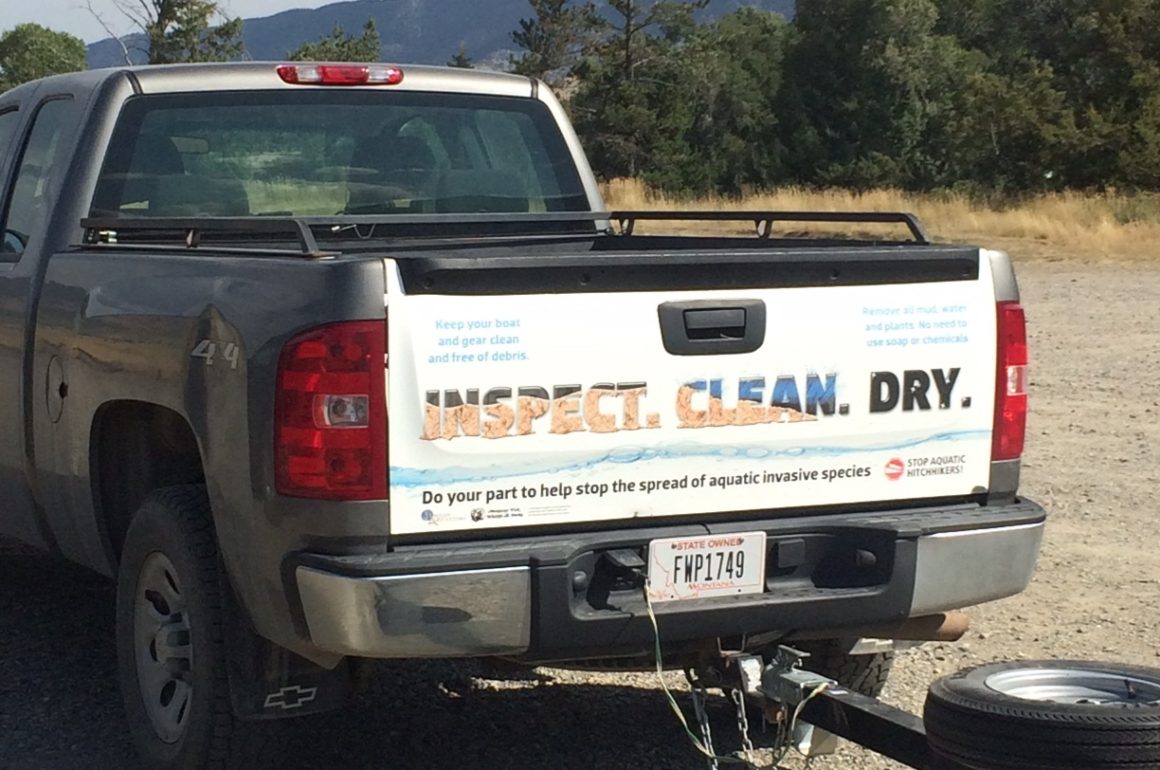
By Martha Williams, Director, Montana Fish, Wildlife & Parks
Montanans know how precious water is. It’s essential for fish and wildlife, boating and angling, irrigating, drinking and creating much of our electricity. When something threatens our water — such as aquatic invasive species — we are on high alert.
Preventing the introduction and spread of AIS is work that Montana Fish, Wildlife & Parks takes very seriously as we understand the devastation it can cause to habitat, recreation and our economy.
Our resulting AIS program is based on four fundamental pillars: statewide coordination with partners, monitoring and early detection, rapid response preparedness and prevention.
After the discovery of invasive mussel larvae on Tiber Reservoir and a suspect sample on Canyon Ferry Reservoir in 2016, FWP significantly expanded our watercraft inspection, monitoring and outreach programs. We also increased efforts to coordinate these programs with partner agencies and organizations who, like us, want to stop AIS from infesting our waters.
Here are some examples of our work in these areas for the 2019 boating season.
Coordination
We have expanded our AIS education and outreach efforts with conservation clubs, watershed and weed groups, conservation districts and tribes to help us deliver information on AIS prevention to communities and audiences across the state.
Monitoring and Early Detection
We’ve grown our AIS monitoring program dramatically and are surveying more waterbodies for all types of invasive plants and animals and increasing the number of water samples collected and analyzed for invasive mussel larvae. Last year, we collected and analyzed more than 2,100 water samples. This season, more partners are helping with monitoring, allowing more people to look for AIS around the state.
Rapid Response Preparedness
We’ve implemented a rapid-response plan that outlines the actions FWP and our partners would undertake if invasive mussels were detected.
Prevention
In 2018, we, and our partners, inspected a record number of watercraft in Montana. This year’s adjustments to our inspection stations will improve efficiency and ensure we’re targeting areas with the highest risk. This includes relocating some stations along with expanding the season and hours of operation of others.
We couldn’t do any of this work without the many partners who join us in protecting our waters. FWP contracts with local government entities including the Confederated Salish and Kootenai Tribes, Blackfeet Nation, Missoula County and Garfield County Conservation District.
This year, we expect to contract with McCone Conservation District to operate a station at Nashua. In addition, Glacier National Park, Bighorn Canyon Recreation Area and the Whitefish Lake Institute will sponsor and operate inspection stations in coordination with FWP.
Still, the most important role to play is yours. The protection of our waters needs everyone’s help. If you boat or fish, make sure to follow the principles of clean, drain, dry.
- Clean all mud and debris from the watercraft, trailer, waders and fishing equipment.
- Pull drain plugs and make sure all compartments, bilges and ballasts are drained.
- Dry out your watercraft, including dry wells, storage areas and compartments.
For more information, you can visit fwp.mt.gov or call the FWP fisheries office at 406-444-2440.
Thank you for helping us protect Montana’s waters.
—Martha Williams, Director, Montana Fish, Wildlife & Parks
